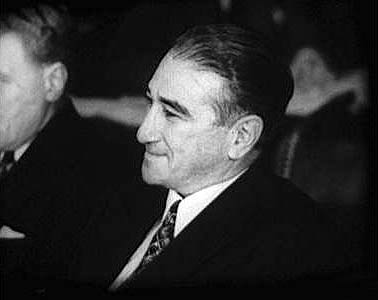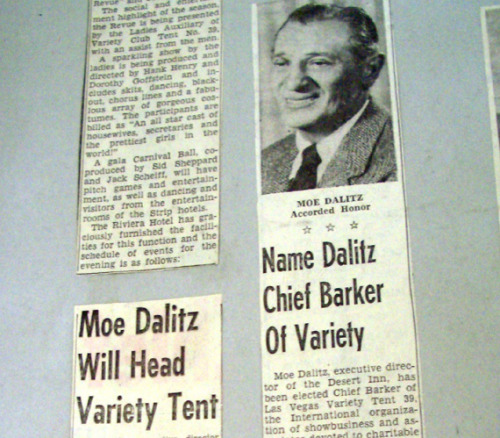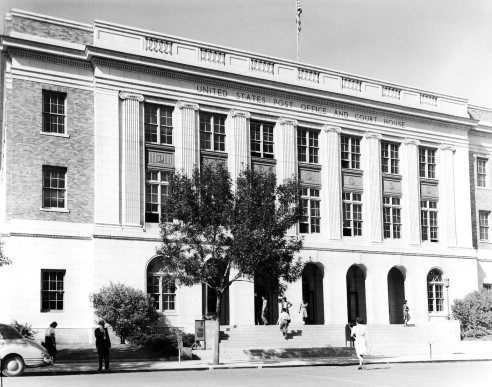Entries in Moe Dalitz (2)
Got a Moe Dalitz Story?

In his later years he was known for his philantrophy, in his younger years he was a member of Cleveland's Purple Gang, in his mid-years, he was the mob's man in Las Vegas. When Wilbur Clark fell into financial problems with the Desert Inn, Moe helped him out and, in doing so, got controlling interest in the hotel.

When Tony Cornero ran into financial problems while building the Stardust, Moe was there, all to happy to help out. When Cornero took his gambling jones too far at a craps table one evening and dropped dead, Moe and company saw their chance to take control.
Moe was the go-to man throughout the history of the Las Vegas Strip in the Classic Las Vegas era.
He saw a chance to cash out with a bundle when Howard Hughes told Robert Maheu to go tell Moe that Hughes wasn't leaving the Desert Inn penthouse in time for the New Year's celebration of 1966. Moe said he had to go. When push came to shove, Hughes bought the hotel and Moe was, in the end, financially, a happy, happy man.
He was always philanthropic, like many of the old casino operators were. They knew that giving back to the community was a way to keep that target off their back. He helped build Sunrise Hospital. He worked with Irwin Molasky to build the Boulevard Mall and Paradise Palms. Over the years, he burnished that philanthropic halo as much as he could.

If you knew Moe or have stories about Moe, John L. Smith at the Las Vegas Review-Journal wants to hear from you. He is helping gather stories about Moe because Moe's daughter, Suzanne Dalitz- a journalist in her own right, is writing a book.
So, if you knew Moe or have stories about Moe, contact John L. here.
When Sen. Kefauver came to town

photo courtesy of Life Magazine
Sixty years ago today (Monday, Nov. 15th) , Senator Estes Kefauver and his committee came to Las Vegas to further their investigation into organized crime.
Kefauver was a Senator from Tennessee. In 1950, he began an investigation into organized crime. The committee was officially known as the Senate Special Committee to Investigate Crime in Interstate Commerce but quickly became known as the Kefauver hearings.
Kefauver and his committee (and the press) traveled around the country from Kentucky to the Mid-West to Nevada in their quest for more information on the mob. They traveled to 14 cities and interviewed over 600 people including Frank Costello. Costello made himself famous by refusing to allow his face to be filmed during his questioning and then staged a much-publicized walkout.
By televising the hearings at a time when Americans were just beginning to buy televisions and were entranced by the box, Kefauver brought the idea of organized crime and the mob into the homes and appliance stores of Americans around the country. Kefauver rode that wave of popularity and ran for president twice.

By the time Kefauver and his committee rolled into Las Vegas via train, they had a list of interviewees that included Wilbur Clark and Moe Dalitz among others. They convened in the Federal courthouse and post office. Dalitz was quoted as telling Kefauver and his committee who criticized him for being a bootlegger, "If you hadn't have drunk it, I wouldn't have bootlegged it."

After two hours, the committee adjourned and went on a field trip to Hoover Dam. which had little or nothing to do with organized crime but is one of the great architecural marvels of the 20th Century.
The aftermath of the Kefauver hearings did have an upside for Las Vegas and Nevada. The other cities that were involved in gambling, it was illegal there. Here in Las Vegas (and throughout Nevada) gambling was legal.
Organized crime began to seriously look at Las Vegas as their headquarters for gambling and over the next few years that relationship grew and took on more importance than Estes Kefauver and his committee ever intended or ever realized. It would be another 30 years before Las Vegas was able to break the mob's hold on Las Vegas.
To honor this event, the people behind the Organized Crime and Law Enforcement Museum ( better known as the Mob Museum where the hearings were held) are having a media event. Mayor Oscar Goodman (for those who love irony, Goodman as a mob attorney defended his clients in the courthouse) and others will be in attendance.



